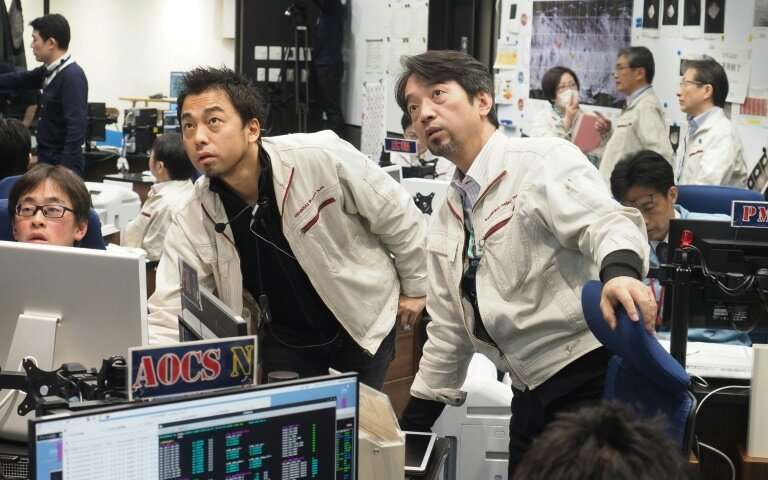Japan’s Hayabusa2 lands on asteroid Ryugu
Deborah Byrd in SPACE | February 22, 2019
The Hayabusa2 spacecraft touched down briefly and successfully on asteroid Ryugu Friday morning, 200 million miles (300 million km) from Earth. It successfully fired a bullet into the asteroid to puff up dust for sample collection.
| A live webcast showed Hayabusa2 scientists nervously monitoring the spacecraft’s February 22 touchdown on distant asteroid Ryugu. |
[We] executed the asteroid explorer Hayabusa2 operation to touch down on the surface of the target asteroid Ryugu for sample retrieval.
Data analysis from Hayabusa2 confirms that the sequence of operation proceeded, including shooting a projectile into the asteroid to collect its sample material. The Hayabusa2 spacecraft is in nominal state [performing within acceptable limits]. This marks the Hayabusa2 successful touchdown on Ryugu.
A live webcast of the control room showed dozens of JAXA staff members nervously monitoring data ahead of the touchdown before exploding into applause after receiving a signal from Hayabusa2 that it had landed. Yuichi Tsuda, Hayabusa2 project manager, told reporters:
We made a successful touchdown, including firing a bullet [into the Ryugu asteroid]. We made the ideal touchdown in the best conditions.
The complicated procedure took less time than expected and appeared to go without a hitch, said Hayabusa2 mission manager Makoto Yoshikawa, who added:
I’m really relieved now. It felt very long until the moment the touchdown happened.
He said the firing of the bullet – the first of three planned in this mission – will:
… lead to a leap, or new discoveries, in planetary science.
The asteroid is thought to contain relatively large amounts of organic matter and water from some 4.6 billion years ago when the solar system was born.













 Reply With Quote
Reply With Quote